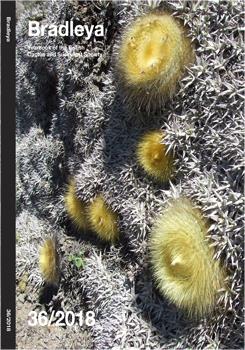The most commonly cultivated member of the Crassulaceae in southern Africa is a hybrid between representatives of the genera Graptopetalum Rose and Echeveria DC., in the nothogenus ×Graptoveria Gossot. However, to date there has been doubt as to the name that should be applied to this hybrid. Plants form distinct stems that are unable to retain the rosettes in an erect position, so becoming pendent, or creeping when grown on flat ground. The leaves of this ×Graptoveria are borne in dense, apical rosettes, have an obovate-spathulate shape, and are sometimes obscurely keeled. They are light glaucous-grey and pink-infused in full sun, and the margin is a lighter, whitish blue colour. The flowers are light yellow, with the central section of the petals longitudinally light greenish infused. The combination of these characters clearly separates this hybrid from any Crassulaceae taxa indigenous to southern Africa. The parentage of the hybrid has been postulated as E. elegans Rose and G. paraguayense (N.E.Br.) E.Walther. This hybrid is exceedingly common in southern African horticulture; however, it has not become invasive after many decades of cultivation, and shows no signs of becoming problematical. The history and nomenclature applicable to the hybrid are clarified, and the cultivar name ×Graptoveria ‘Fantome’ Aubé ex Gideon F.Sm. & Bischofb. is established for it.
How to translate text using browser tools
1 July 2018
The cultivar ×Graptoveria ‘Fantome’ Aubé ex Gideon F.Sm. & Bischofb. is the most Commonly Cultivated Representative of the Crassulaceae in Southern Africa
Gideon F. Smith,
Margrit Bischofberger,
Estrela Figueiredo
ACCESS THE FULL ARTICLE





